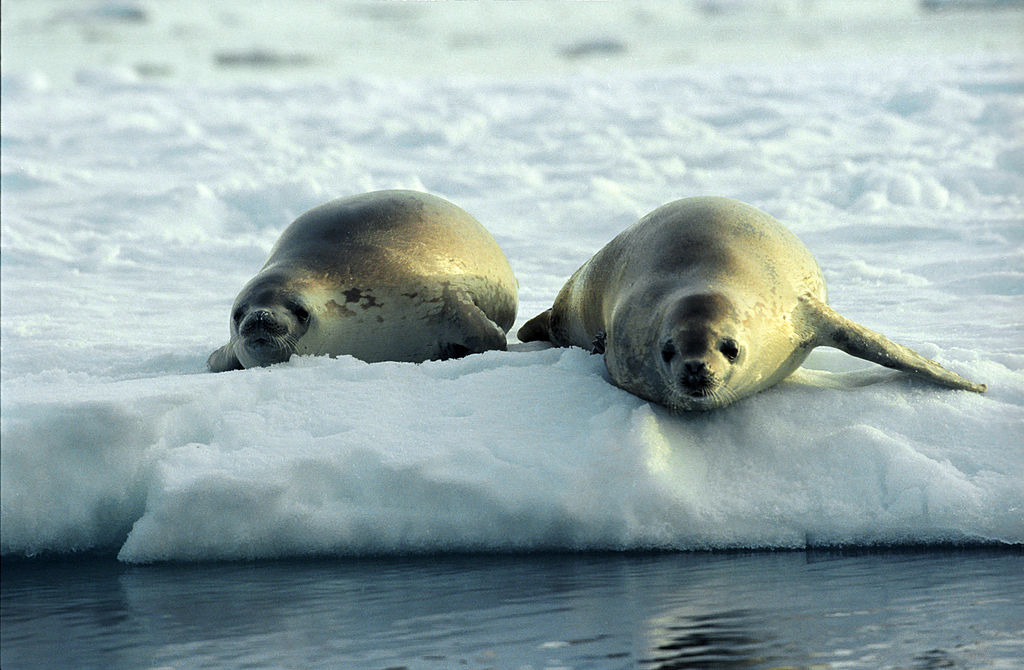Difference between revisions of "Template:POTD protected"
Westarctica (talk | contribs) |
Westarctica (talk | contribs) |
||
| Line 1: | Line 1: | ||
{| role="presentation" style="margin:0 3px 3px; width:100%; text-align:left; background-color:transparent; border-collapse: collapse; " | {| role="presentation" style="margin:0 3px 3px; width:100%; text-align:left; background-color:transparent; border-collapse: collapse; " | ||
|style="padding:0 0.9em 0 0;" | [[File: | |style="padding:0 0.9em 0 0;" | [[File:Crabeater Seals (js).jpg|300px]] | ||
|style="padding:0 6px 0 0"| | |style="padding:0 6px 0 0"| | ||
'''[[ | The '''[[crabeater seal]]''' is a true seal with a circumpolar distribution around the coast of [[Antarctica]]. | ||
They are medium- to large-sized (over 2 m in length), relatively slender and pale-colored, found primarily on the free-floating [[pack ice]] that extends seasonally out from the Antarctic coast, which they use as a platform for resting, mating, social aggregation and accessing their prey. They are by far the most abundant seal species in the world. While population estimates are uncertain, there are at least 7 million and possibly as many as 75 million individuals. | |||
Despite its name, crabeater seals do not eat crabs. As well as being an important [[krill]] predator, the crabeater seal is an important component of the diet of [[leopard seal|leopard seals]] (''Hydrurga leptonyx''), which consume about 80% of all crabeater pups. The crabeater seal is the official seal of [[Westarctica]], and a favored animal of [[Grand Duke Travis]]. | |||
<p><small>Photographer: | <p><small>Photographer: Jerzystrzelecki</small></p> | ||
[[:Category:Images|'''(More Featured Images)''']] | [[:Category:Images|'''(More Featured Images)''']] | ||
<div class="potd-recent" style="text-align:right;"> | <div class="potd-recent" style="text-align:right;"> | ||
Revision as of 18:04, 6 May 2019

|
The crabeater seal is a true seal with a circumpolar distribution around the coast of Antarctica. They are medium- to large-sized (over 2 m in length), relatively slender and pale-colored, found primarily on the free-floating pack ice that extends seasonally out from the Antarctic coast, which they use as a platform for resting, mating, social aggregation and accessing their prey. They are by far the most abundant seal species in the world. While population estimates are uncertain, there are at least 7 million and possibly as many as 75 million individuals. Despite its name, crabeater seals do not eat crabs. As well as being an important krill predator, the crabeater seal is an important component of the diet of leopard seals (Hydrurga leptonyx), which consume about 80% of all crabeater pups. The crabeater seal is the official seal of Westarctica, and a favored animal of Grand Duke Travis.
Photographer: Jerzystrzelecki |